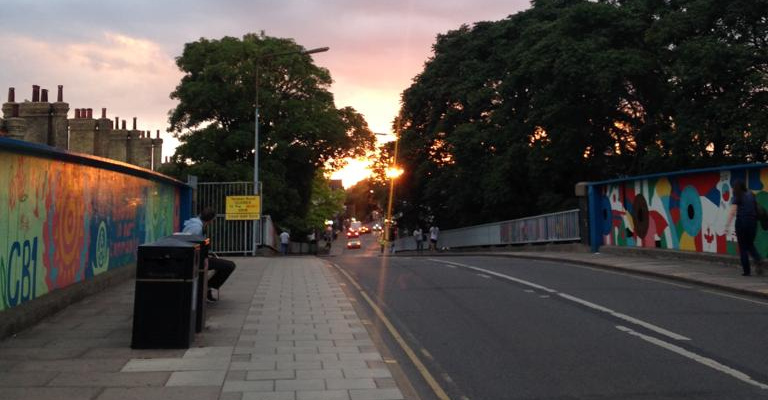Cambridgeshire County Council Signals Team
Mill Road Bridge in Cambridge was closed to vehicles for eight weeks from 1 July 2019 so that Govia Thameslink could carry out crucial, scheduled work to improve rail services.

The Smart team used this opportunity to install sensors on Mill Road and the surrounding streets, from May 2019 for up to 18 months, to monitor the impact the bridge closure has on the local road network.
Knowing the Smart team had installed these sensors, the Signals Team for Cambridgeshire County Council contacted us to ask if the data was showing an increase in traffic on Cherry Hinton Road.
Why was information needed?
Traffic signals help to ensure that the busy road network in Cambridge runs more smoothly – by reducing congestion, regulating air quality and helping keep buses to timetable.
The Signals team wanted to know what the new sensors were showing as they had received notifications about increased congestion levels, and in particular that it was taking a long time for vehicles to exit the junction on Clifton Road.
The Smart team provided the Signals team with the vehicle count data from the relevant sensor for before the Mill Road closure and the first few days after it had been closed.
What did the data say?
The sensors showed a relatively significant increase in traffic on Cherry Hinton Road, which in turn was reducing the amount of time vehicles had to exit Clifton Road.
What did the Signals team change?
They used the system* which controls the coordination of traffic signals along certain roads and changed the timings to give more time for traffic on Clifton Road to get through the traffic lights.
What was the immediate outcome?
Reduced delay and congestion on Clifton Road – this was a direct result from better understanding of the traffic flow movements.
What does this show?
That sensors can provide a valuable insight into both predicted and unpredictable changes in traffic patterns, and help to support an informed decision on making immediate changes to the network which make a difference.

What’s next?
The Smart team will ask to review the data from the Signal team’s systems, in order to ‘see’ the impact that the changes have.
This is a true example of how data from sensors can support additional decision making. It also shows the strong possibility that in the future, machine learning will help to support and make decision making more seamless.
* SCOOT (Split, Cycle and Offset Optimisation Technique) is the system used to control the coordination of traffic signals along certain traffic corridors. The Cherry Hinton Road/Clifton Road junction and Hills Road/Cherry Hinton Road junction are both controlled and coordinated by SCOOT.
SCOOT control requires an operator to set a number of parameters that confine/influence the timings that SCOOT selects to give to each junction. The signals team therefore changed some of the parameters to allow Clifton Road to receive a slightly longer green time.
